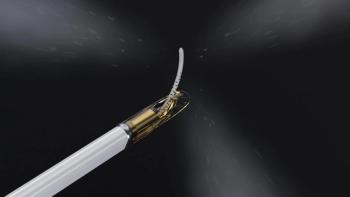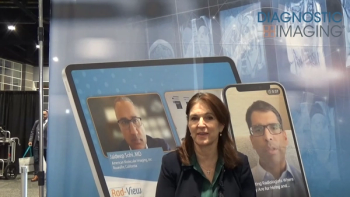
Hybrid PET/MRI Assessment with Hippocampal Radiomics May Facilitate Early Alzheimer's Diagnosis
Employing a hybrid positron emission tomography (PET)/magnetic resonance imaging (MRI) model to assess predictive features of Alzheimer’s disease (AD), researchers noted a 100 percent sensitivity rate and a 93 percent sensitivity rate for distinguishing between AD and normal cognition, according to a study presented at the recent Society of Nuclear Medicine and Molecular Imaging (SNMMI) conference in Chicago.
Assessing predictive hippocampal radiomic features with a multimodal combination of positron emission tomography (PET) and magnetic resonance imaging (MRI) may lead to earlier detection of Alzheimer’s disease (AD), according to new research presented at the recent
Noting key early predictive features for AD, ranging from glucose metabolism to decreased cerebral blood flow and hippocampal atrophy, researchers assessed a multiparametric imaging model for differentiating between AD, mild cognitive impairment (MCI) and normal cognition (NC) in 159 patients.1 The imaging model included the use of arterial spin-labeling (ASL) T1-weighted MRI and 18F-fluorodeoxyglucose PET (18F-FDG PET), according to the study.
With the fivefold cross-validation logistic regression model, the researchers found an area under the curve (AUC) of 98 percent as well as a 93 percent specificity rate and a 100 percent sensitivity rate for differentiating between AD and NC.1
For the differentiation of AD and MCI, the study authors noted an AUC of 85 percent, 88 percent sensitivity and 73 percent specificity. The multiparametric imaging model also demonstrated an AUC of 86 percent, 80 percent sensitivity and 81 percent specificity for differentiating between MCI and NC, according to the study.1
“Our findings demonstrate that multi-dimensional imaging of the hippocampal radiomics benefits the identification of early AD and may provide a potential biomarker for clinical applications in AD,” noted Jie Lu, M.D., who is affiliated with the Department of Radiology and Nuclear Medicine at Xuanwu Hospital and Capital Medical University in Beijing, China, and colleagues.
(Editor’s note: For related content, see “
Reference
1. Chen Z, Yan S, Bi S, Cui B, Yang H, Lu J. Early diagnosis of Alzheimer’s disease using multiparametric hippocampal signatures with 18F-FDG PET/MR radiomics. Poster presented at Society of Nuclear Medicine and Molecular Imaging (SNMMI) 2023 Annual Meeting June 24-June 27, Chicago. Available at:
Newsletter
Stay at the forefront of radiology with the Diagnostic Imaging newsletter, delivering the latest news, clinical insights, and imaging advancements for today’s radiologists.




























